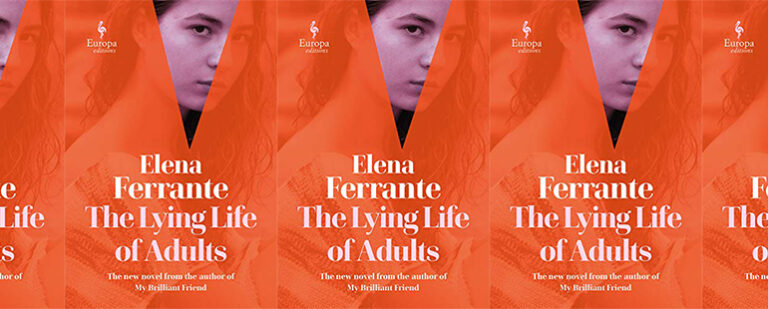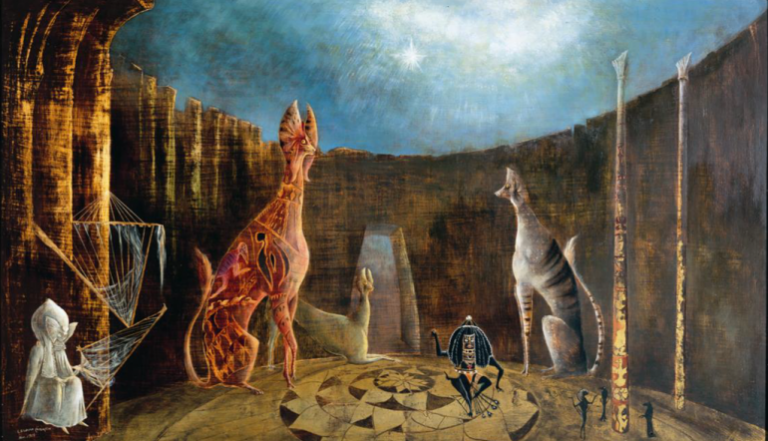Italo Calvino and the Form of Outer Space

Literary texts and other categories of art often give rise to questions about the relationship between form and content. These questions can be deceptively simple: Why is this poem suited to be a sonnet? How does this fractured narrative structure reflect the character’s state of mind? Sometimes it’s clear what is form and what is content, but the deeper we dive, the more obscure it can become. What makes the brushstrokes distinct from the image? When the distinction between form and content is difficult to perceive, it can become nearly impossible to articulate the relationship between these supposed opposites. This tangle of questions is not limited to the arts; the problem of form and matter is important to anyone who deals with questions of creation. Philosophers, theologians, and even scientists all have different ways of applying similar questions to the matter of the universe itself. In “The Form of Space,” a short story from his Cosmicomics collection, Italo Calvino brings together approaches from all of these fields and more, playfully exploring the nature of “form” as it appears in the text as well as in the cosmos.
Calvino introduces his interdisciplinary quest not with ontology or literary theory, but with science. He opens each of the stories in Cosmicomics with a scientific epigraph, as if invoking the realm of the “real” as a muse for his explorations of surreal images and ideas. The epigraph for “The Form of Space” reads: “The equations of the gravitational field which relate the curve of space to the distribution of matter are already becoming common knowledge.” This assertion sets the stage for a fantastical narrative that unravels how the force of gravity determines the relationship between the “curve of space”—its form—and “the distribution of matter”—the physical stuff of the universe. Translated to the act of storytelling itself, this question of how form relates to matter becomes, instead, a way of rethinking the narrative categories of literary form and content.
At this point in the collection, Calvino and his unpronounceable narrator Qfwfq have already explored the idea of gravity through several different images. The first story, “The Distance of the Moon,” is perhaps the most memorable of these, with its concrete imagery of the Moon dipping close to the sea. There, the interplay of the Earth and the Moon’s gravitational forces is tangible, visible in the way characters travel between the two bodies; they can physically feel the lightness and heaviness that play out with these laws of attraction (see: “The Nearness of the Moon”). In “The Form of Space,” Calvino puts forward his ideas about gravity in an entirely different way. Instead of occurring among existing celestial bodies, the force operates in an abstract setting of proto-universe, the “void” before the emergence of form(s). Here, the characters are forever “falling” without clear direction or speed:
I’m talking about the time when there wasn’t any Earth underneath or anything else solid, not even a celestial body in the distance capable of attracting you into its orbit. You simply fell, indefinitely, for an indefinite length of time . . . Since there were no reference points, I had no idea whether my fall was fast or slow.
Perhaps the force of gravity itself is still in the process of creation; the planets and stars haven’t pulled themselves together yet, so there is nothing even “capable of attracting you into its orbit.” Outside of this first-person voice, the only other perceivable entities are two named figures who happen to be falling at the same rate: Qfwfq’s obvious love interest, Ursula H’x, and the archetypical rival for her affections, Lieutenant Fenimore.
At first, the rivalry between Qfwfq and Lieutenant Fenimore is difficult to trace. Are they trapped in eternally parallel trajectories? Or is one of them gaining closeness to Ursula while the other falls farther away? This ambiguity arises partly because the passage of time itself is elusive for Qfwfq, whose awareness of the present does not extend into memory; he reflects, “what might have been before, since it couldn’t be remembered, belonged to the same imaginary world as the future, and was confounded with the future.” After recognizing this fraught relationship between formlessness and the passage of time, Calvino also interrogates the related problem of whether there can be any movement or change—and by extension, any agency—if there is only space without form or time.
Here, agency seems impossible: our narrator is stuck, lusting after Ursula without any real hope of achieving intimacy. He can only fall and watch her falling. But after a while, he notices a change, a hint at the beginning of form: “an arching of her back and a kind of twitch of her behind, but not so much the behind itself as an external sliding that seemed to rub past the behind and cause a not unpleasant reaction from the behind itself.” What invisible object is Ursula sliding past? This moment, at first an uncomfortable instance of what could be the proto-male gaze, suddenly unfolds into a revelation regarding the characters’ predicament in space:
This fleeting impression was enough to make me see our situation in a new way: if it was true that space with something inside is different from empty space because the matter causes a curving or a tautness which makes all the lines contained in space curve or tauten, then the line each of us was following was straight in the only way a straight line can be straight: namely, deformed to the extent that the limpid harmony of the general void is deformed by the clutter of matter, in other words, twisting all around this bump or pimple or excrescence which is the universe in the midst of space.
Qfwfq’s gaze upon Ursula and his way of noticing the “twitch of her behind” seems to snap something different into the story’s universe. The nature of space unrolls into something more visible, more exact. Instead of a void of parallel lines, we have a new kind of space: “space breaks up around every cherry tree and every leaf of every bough that moves in the wind . . . all printed in negative in the dough of the void, so that there is nothing now that does not leave its print.” This abstract way of seeing form and content—a kind of matrix of reciprocal imprints where everything is either empty space or stuffed space—all began with something even more primordially physical: Qfwfq’s act of gazing at Ursula. With this feeling of active attraction, does Qfwfq help initiate the forces of gravity that bring form into the universe? Or does his attraction simply help him to see the way space has always been around him, shaped by gravity?
After this shift, Qfwfq and Lieutenant Fenimore begin to pursue each other among the obscure caverns and precipices of space, somehow acquiring pistols along the way. Bullets whistle between them as the background continues to transform, and it acquires more and more precise shapes that ultimately begin to resemble the text itself; the flying bullets might be the punctuation marks or the dots on the i’s. Calvino ultimately illustrates how the titular “form of space” is the text itself, and that the characters are falling through the letters of the text—“hiding behind the loops of the l’s, especially the l’s of the word ‘parallel’” or “slipping behind the tails of the f which trail off until they become wisps.” The form of the story—the stalks and curls of the letters themselves—becomes essentially identical to the action, the “content.” Here, everything that happens necessarily happens through storytelling; without form, there is no content at all.
This piece was originally published on December 16, 2019.


